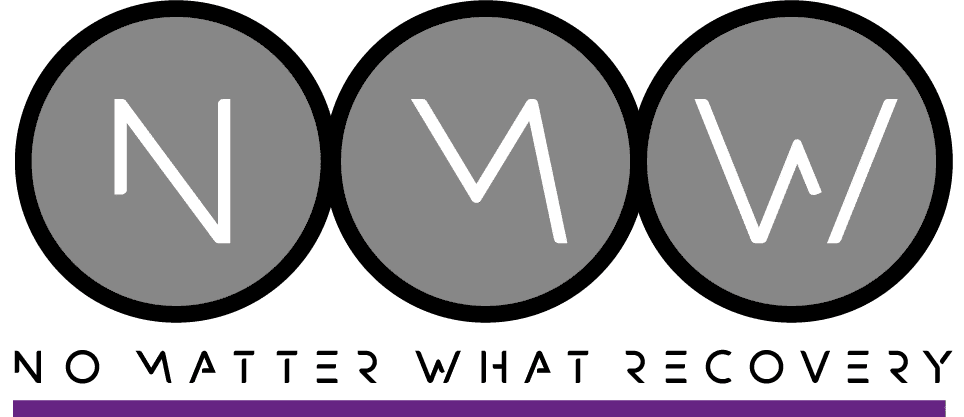Medically Reviewed by: Eric Chaghouri
Wet brain, a colloquial term for a complex health condition officially known as Wernicke-Korsakoff syndrome, remains one of the less discussed consequences of chronic alcohol abuse. This article delves deep into unraveling “what is wet brain,” spotlighting its symptoms, underlying causes, and underlining the critical importance of early detection and understanding.
What is Wet Brain?
At its core, wet brain is a manifestation of severe brain damage caused by a confluence of alcohol abuse and critical vitamin B1 (thiamine) deficiency. Medical science divides this condition into two phases: Wernicke’s encephalopathy, an acute phase characterized by confusion, loss of muscle coordination, and visual disturbances, which is often reversible with prompt treatment; and Korsakoff’s psychosis, a chronic condition that follows, marked by profound memory loss and cognitive dysfunction. Understanding these stages is crucial for recognizing and treating the condition effectively.
Understanding Wet Brain: A Closer Look at Symptoms and Stages
Wet brain, or Wernicke-Korsakoff syndrome, progresses through stages, each marked by distinct symptoms and challenges. The early stages are crucial for early diagnosis and effective treatment. Symptoms such as ataxia (loss of muscle coordination), double vision, and drooping eyelids are early warning signs. Recognizing these common symptoms can lead to prompt medical intervention, potentially reversing the condition’s course.
Symptoms of Wet Brain
The journey into the maze of wet brain begins with recognizing its symptoms, which are as multifaceted as the condition itself. Early signs include subtle changes in coordination and mental state, progressing to more severe neurological and cognitive impairments. As the condition advances, individuals may experience profound memory lapses, difficulty in forming new memories, and even confabulation, where they inadvertently fabricate experiences without the intention to deceive. These symptoms of Wernicke Syndrome not only signify the damage incurred by the brain but also highlight the urgent need for medical intervention.
Causes and Risk Factors
Unraveling the causes of wet brain points to a direct link with chronic alcoholism and nutritional deficiencies. Alcohol’s interference with the body’s ability to absorb and utilize thiamine stands as the primary culprit, alongside poor dietary habits that further exacerbate vitamin deficiencies. Individuals entrenched in long-term alcohol abuse, those with malabsorption issues, or people adhering to diets lacking in essential nutrients are at heightened risk.
The Role of Alcohol in Wet Brain Development
Excessive alcohol consumption and heavy drinking are primary causes of wet brain. Individuals with chronic alcohol misuse face a higher risk of developing wet brain, with a prevalence rate estimated at approximately 12% to 14%. Bad drinking habits interfere with the body’s thiamine levels, leading to severe medical conditions. Understanding the effects of alcohol on the nervous system and its contribution to substance abuse disorders is essential for prevention and treatment.
The Stages of Wet Brain: Understanding the Progression
Wet brain, also known as Wernicke-Korsakoff syndrome, is a condition characterized by severe neurological and cognitive impairments resulting from prolonged alcohol abuse and thiamine (vitamin B1) deficiency. This condition unfolds in two distinct stages, each with its unique set of symptoms and challenges. Understanding these stages is essential for early detection, effective treatment, and potentially reversing the damage caused by this condition.
Stage 1: Wernicke’s Encephalopathy
Wernicke’s encephalopathy represents the acute phase of wet brain and is often the first sign of this serious condition. It is characterized by:
- Confusion and disorientation: Individuals may appear dazed, unable to form coherent thoughts or understand their surroundings.
- Ataxia: This involves a lack of muscle coordination, leading to stumbling and difficulty with movements that require fine motor skills.
- Ocular abnormalities: Double vision, drooping eyelids, and abnormal eye movements (nystagmus) are common. These symptoms reflect the brain’s impaired ability to control eye muscles effectively.
- Memory problems: While not as pronounced as in the later stage, short-term memory issues may begin to emerge.
Prompt recognition and treatment of Wernicke’s encephalopathy are crucial. High doses of thiamine, administered intravenously or intramuscularly, can lead to significant improvements. In many cases, early intervention can reverse the symptoms of this stage, highlighting the importance of immediate medical attention.
Stage 2: Korsakoff’s Psychosis
Korsakoff’s psychosis is the chronic and more severe stage of wet brain, developing as a progression from untreated or inadequately treated Wernicke’s encephalopathy. Its hallmark features include:
- Severe memory impairment: Individuals may struggle with both short-term and long-term memory loss. The most striking aspect is the difficulty in forming new memories, a condition known as anterograde amnesia.
- Confabulation: Individuals may inadvertently fabricate stories to fill in their memory gaps. This is not done to deceive but as an unconscious attempt to make sense of their experiences.
- Cognitive dysfunction: Beyond memory problems, individuals may exhibit poor judgment, lack of insight, and difficulty processing information.
- Emotional changes: Apathy, indifference, and fluctuating moods are common, affecting the individual’s social interactions and quality of life.
Treatment for Korsakoff’s psychosis involves ongoing thiamine supplementation and supportive care to manage symptoms. Rehabilitation focuses on cognitive therapies and strategies to cope with memory loss. Although some symptoms may improve with treatment, many individuals experience permanent effects on memory and cognition.
Wet Brain Diagnosis and Treatment Options
Diagnosing wet brain involves recognizing neurological symptoms and memory problems, including memory impairment. Advanced imaging techniques and blood tests help in diagnosing this brain disorder. Treatment focuses on supplements to boost thiamine levels and treatment options, including comprehensive treatment programs at specialized treatment centers.
Prevention of Wet Brain
Preventing wet brain hinges on lifestyle modifications, particularly moderating alcohol intake and ensuring a diet rich in essential vitamins, particularly B1.
Seeking Treatment for Alcohol Addiction
A pivotal component in preventing wet brain is addressing the root cause: alcohol addiction. Seeking professional help for alcohol addiction is not only a step towards preventing wet brain but also a move towards reclaiming control over one’s life and health. Treatment options range from detoxification programs and medication-assisted treatments to behavioral therapies and support groups, each tailored to the individual’s specific needs and circumstances. This proactive approach not only mitigates the risk of developing wet brain but also paves the way for a healthier, more fulfilling life.
Nutritional Considerations in Wet Brain Prevention
A balanced diet plays a pivotal role in preventing wet brain. Essential nutrients, particularly thiamine levels, are critical. Poor diet and poor nutrition are significant risk factors for developing wet brain. Encouraging dietary changes that include enough thiamine and addressing potential malnutrition can be preventive measures against this condition.
Impact of Wet Brain on Patients and Families
The repercussions of wet brain extend beyond the affected individuals, casting long shadows over their families and caregivers. The emotional strain, coupled with financial burdens and the challenges of caregiving, can be overwhelming.
The Psychological Impact of Wet Brain
Wet brain affects not just the individual but also their family, leading to health problems that can be life-threatening. Memory problems and neurological symptoms can have a profound impact on daily life. Support for mental health, addressing potential eating disorders, and promoting mental well-being are crucial parts of managing wet brain.
Living with Wet Brain: Support and Rehabilitation
Addiction treatment and rehabilitation are long-term processes that require a dedicated support system. Integrating cognitive therapies and lifestyle modifications can aid in recovery and improve quality of life. Support and resources are available for those navigating the challenges of wet brain and its aftermath.
Overcome Alcohol Addiction and Prevent Wet Brain
Delving into the complex world of “what is wet brain” reveals the profound impact of this condition on individuals and their communities. Through awareness, early detection, and comprehensive care, we can make strides in preventing and managing wet brain, offering hope and support to those affected. Let this article serve as a beacon of knowledge and a call to action for all readers to engage in preventative measures and seek help when needed.
If you or a loved one are struggling with alcohol addiction, get in touch with No Matter What Recovery. Our alcohol addiction treatment facility is dedicated to providing individuals struggling with Alcohol Use Disorder, a safe, encouraging environment to recover.
FAQs About Wet Brain
Wet brain can be partially reversible if diagnosed and treated early, especially during the Wernicke’s encephalopathy stage. Prompt administration of thiamine can lead to significant improvements. However, Korsakoff’s psychosis stage may result in permanent damage, underscoring the importance of early intervention.
The onset of symptoms can vary widely among individuals, depending on factors such as the extent of alcohol abuse and nutritional deficiencies. Some may experience early signs within a few weeks of nutritional depletion, while others may not show symptoms for several months or even years.
The potential for full recovery depends on the stage of the condition at diagnosis and the speed of treatment. Early detection and treatment during the Wernicke’s encephalopathy stage can lead to significant recovery, but long-term effects of Korsakoff’s psychosis, particularly memory issues, may be irreversible.
Incorporating foods rich in thiamine, such as whole grains, pork, beans, nuts, and seeds, into one’s diet can help prevent wet brain. Additionally, reducing alcohol consumption is crucial to allow the body to absorb and utilize thiamine effectively.

Dr. Eric Chaghouri is our Medical Director at No Matter What Recovery. Since completing his forensic psychiatry fellowship, he has established a successful and thriving practice in Southern California, focusing on treatment of co-occurring psychiatric and addictive disorders.

Dr. Eric Chaghouri is our Medical Director at No Matter What Recovery. Since completing his forensic psychiatry fellowship, he has established a successful and thriving practice in Southern California, focusing on treatment of co-occurring psychiatric and addictive disorders.







